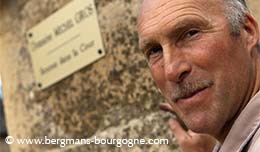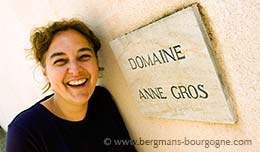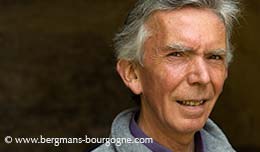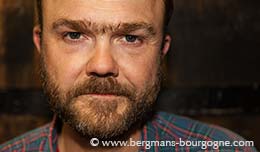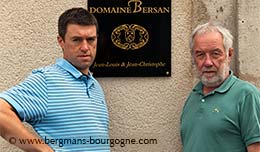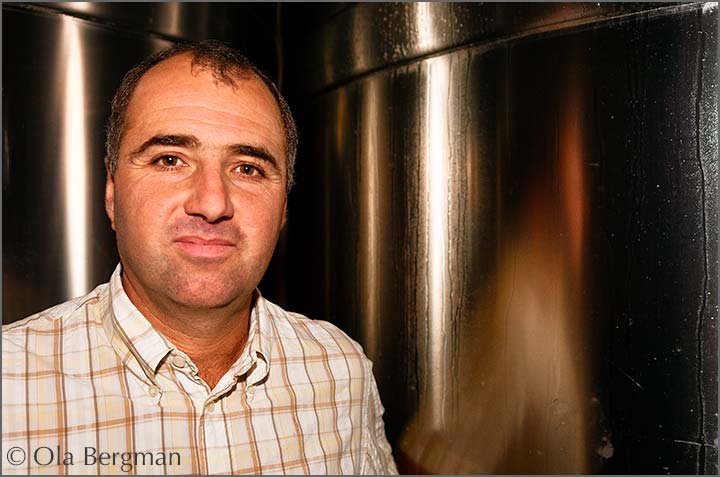
f it is too easy it is not fun, he says with a smile.
Jean-Pierre Michel has been making wine in the middle of the Viré-Clessé appellation for the past three decades. His first vintage was in 1981 at his family domaine, René Michel et ses Fils. In 2004 he moved on to set up his own domaine – Domaine Jean-Pierre Michel.
He sees himself as a composer, with nature being his orchestra.
– One has to realise that nature is very powerful. It is not nature that should adopt to man. It is the other way around.
Viré-Clessé is a relatively new appellation. It was in 1998, after 25 years of work, that the two neighbouring villages, Viré and Clessé, in the eastern part of the Mâconnais received their village appellation status. The vineyards run along the slope between the villages, spilling over into both Montbellet and Laizé. Chardonnay is the only allowed grape variety and below the appellation, at the bottom of the slope, is where the Mâcon-Villages appellation begins.
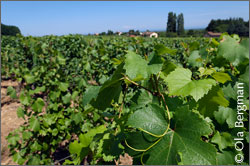 You'll find Domaine Jean-Pierre Michel in Quintaine, the hamlet about halfway between Viré and Clessé. In 2004 Jean-Pierre Michel started out with six hectares. Today the domaine covers eight hectares.
You'll find Domaine Jean-Pierre Michel in Quintaine, the hamlet about halfway between Viré and Clessé. In 2004 Jean-Pierre Michel started out with six hectares. Today the domaine covers eight hectares.
– I have 1,5 hectare at the bottom of the slope in Quintaine, which is Mâcon-Villages, says Jean-Pierre Michel. At the top of the slope I have five hectares of Viré-Clessé, which produce a more complex and rich wine, but perhaps with less immediate pleasure than the Mâcon-Villages.
– Then I have another 1,5 hectare at the extension of the Quintaine part of the appellation. The soil has more chalk and less clay there, which produces a more powerful wine. It's a climat called Sur la Chêne.
When Jean-Pierre Michel left the family domaine it was mainly because he wanted to be able to work without compromising.
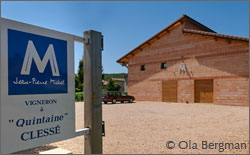 – Being a winemaker I think it is important that you decide everything yourself, he explains, that you express yourself with your passion and beliefs. I really don't think that being a winemaker is like any other profession. For me it is not enough to be just a producer of wine. It is important to try to make wines with character. Above all, it is important to know why you are doing things in a certain manner.
– Being a winemaker I think it is important that you decide everything yourself, he explains, that you express yourself with your passion and beliefs. I really don't think that being a winemaker is like any other profession. For me it is not enough to be just a producer of wine. It is important to try to make wines with character. Above all, it is important to know why you are doing things in a certain manner.
Jean-Pierre Michel speaks with a passion about his job and his appellation. He cannot emphasise enough the importance of being meticulous in your work and open to learning new things all the time.
– For each vintage we learn a little bit more, but at the same time it shows us that we must remain humble. Because each vintage also shows us that we have a lot to learn.
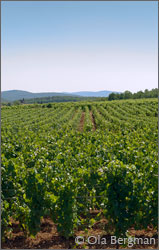 – In my line of work you are a bit like a composer. You have the terroir, a variety of vines and the chardonnay to work with. And you have to adopt to every new vintage.
– In my line of work you are a bit like a composer. You have the terroir, a variety of vines and the chardonnay to work with. And you have to adopt to every new vintage.
– When I started out it was with a generation of winegrowers for which it was enough to just produce. Today it's different. Today you have to be very good at what you do.
– What is important is to get the best possible result from each vintage by using all means available to you – your experience, the soil etc. To be able to make a good wine in a difficult year is a great satisfaction.
Jean-Pierre Michel is not really interested in just talking about the great vintages because, as he puts it, the vines produce grapes every year. The orchestra may be easy to deal with, or it may be difficult, but either way there is wine to be made.
There are several different Viré-Clessé climats in Domaine Jean-Pierre Michel's portfolio, but it is only the Sur la Chêne that is bottled separately. The Viré-Clessé "Terroirs de Quintaine" is a blend of the remaining parcels.
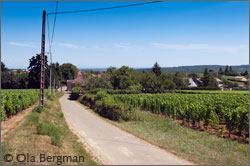 – At the moment I don't bottle these climats separately, explains Jean-Pierre Michel. It's simply because Viré-Clessé is still a young appellation. The consumers need to get to know the appellation better before we can separate the climats. I vinify them separately, but I blend them before bottling. It is just a commercial reality, but I think in a few years we will be able to start changing.
– At the moment I don't bottle these climats separately, explains Jean-Pierre Michel. It's simply because Viré-Clessé is still a young appellation. The consumers need to get to know the appellation better before we can separate the climats. I vinify them separately, but I blend them before bottling. It is just a commercial reality, but I think in a few years we will be able to start changing.
Even if the appellation is young there has already been quite a lot of talk about the possibility of adding premier crus to Viré-Clessé. Jean-Pierre Michel believes this will happen one day, but that it is too early for this discussion. The appellation needs to get older, find its identity.
– I think Viré-Clessé has a very special microclimate, he says. It is very difficult to get a good balance for every vintage on this soil. We are very close to the Saône valley and in some years, 2006 for example, it is very difficult because the sugar levels can climb very quickly. It is important to preserve acidity to keep a good balance in the wine.
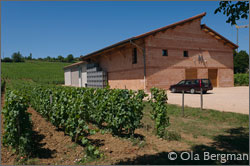 Viré-Clessé is also special in the sense that it is the only place in Burgundy where sweet wine, wine with residual sugar, is made on a regular basis. At Domaine Jean-Pierre Michel you will find Viré-Clessé, "Vendange d'Exception du Terroir".
Viré-Clessé is also special in the sense that it is the only place in Burgundy where sweet wine, wine with residual sugar, is made on a regular basis. At Domaine Jean-Pierre Michel you will find Viré-Clessé, "Vendange d'Exception du Terroir".
– It's a pity that some producers feel that this sweet wine must become a fashion, says Jean-Pierre Michel. In some years it is difficult to make wines without residual sugar. I don't look for residual sugar. But when there is I try to make an interesting wine. But I'm not the one deciding, it's the vintage. I have been making wine for 30 years, but I have only made two vintages with residual sugar – 2002 and 2006.
– Even if I make wines that are dry according to lab analysis it happens quite often that people think there is residual sugar. It is less than 5g/litre, so it's a peculiarity of the soil.
– Some try to make sweet wines every year. But I feel that's a big mistake. It's not an industrial product. It's only a product of the vintage.
© 2011 Ola Bergman










